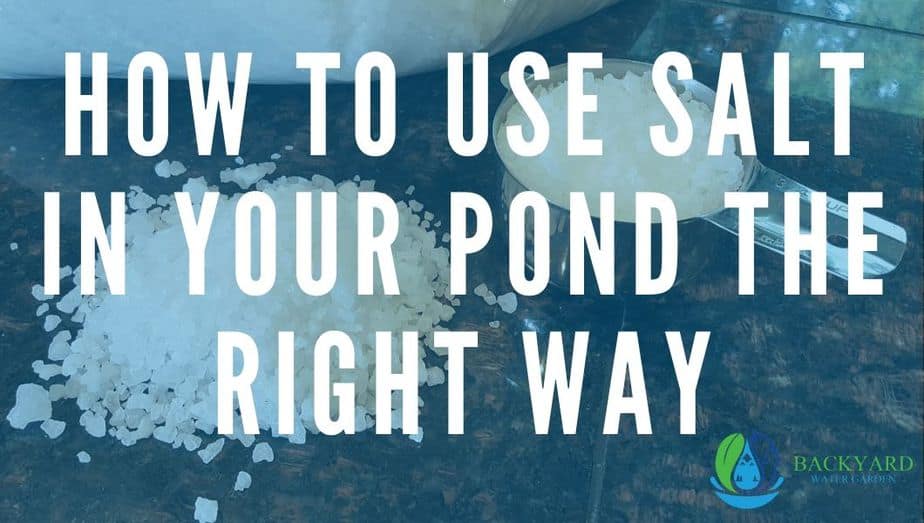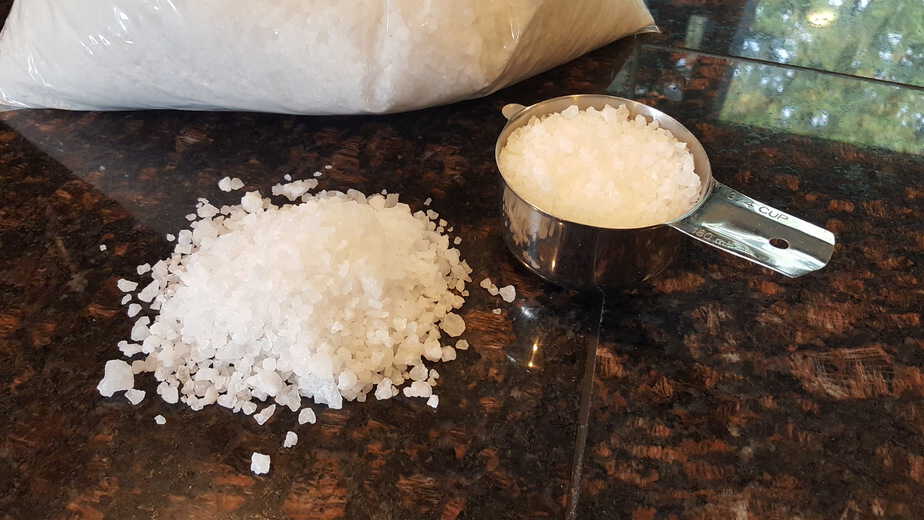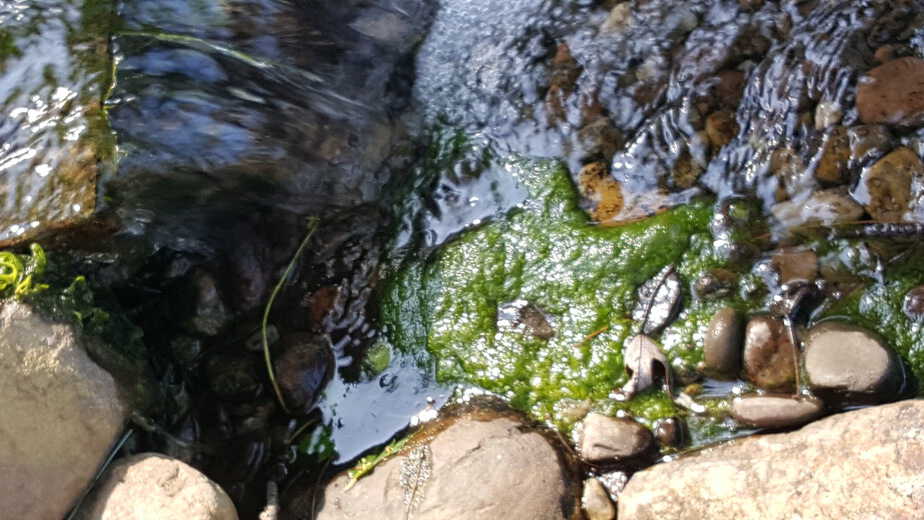
Although pond fish like koi and goldfish are freshwater fish, there are major advantages to adding salt to your backyard pond.
- Enhancement of your fish's slime coat which is their first line of defense against parasites and harmful bacteria.
- Reduction of parasites and harmful bacteria found in your pond.
- Stress of your fish is reduced and water quality is increased.
Salt can also be used for short periods at higher concentrations as a treatment for disease and parasites
In this article you will learn why you would use salt in your pond. What kind of salt to use, as well as how, and when it is necessary. To salt or not to salt, that is the question!
What Kind Of Salt Is Used In Ponds
Pond salt is salt that is not treated with a caking agent, like normal table salt is. The best type of salt to use is made from evaporated sea salt because it contains many other essential nutrients like magnesium, calcium, and potassium. These nutrients help fish stay in a state of balance. This is the best place to get pond salt (affiliate link to Amazon).

Now for the Geeky Stuff
The function of a fish’s gills is to extract oxygen from the water. Inside a fish’s gills there is feather like tissue filled with blood vessels. As water flows past these blood vessels oxygen seeps into the bloodstream and is then delivered to the fishes cells. As oxygen seeps in, carbon dioxide seeps out back into the water.
Osmosis is the movement of water from an area of high concentration to lower concentration. In freshwater fish the concentration of salt in their bodies is higher than it is outside. Freshwater fish actively take salt from their environment through special cells in their gills called chloride cells.
In order to regulate this osmotic pressure from one concentration to another they are in a constant state of osmoregulation (site wikipedia) https://en.m.wikipedia.org/wiki/Osmoregulation

picture from https://en.m.wikipedia.org/wiki/Osmoregulation
The addition of salt to the pond water aids in osmoregulation, and reduces the stress in the fish. The fish do not have to “work as hard” to maintain a state of homeostasis.
Using a maintenance level of salt reduces the risk of osmotic shock. A condition brought on by high levels of stress. Rapid changes in temperature, ph, or salinity that may occur in the water also lead to increased stress levels in your fish and should be avoided.
How To Use Salt In Your Pond
Before using salt in your pond it is essential that you know your ponds volume. Adding too much salt can be dangerous to fish and plants. Use our pond calculator if you are unsure. Add a little less salt than you think you need and test, then add more if necessary.
Before you use salt keep in mind, it does not evaporate, and it cannot be filtered out. Because the man made pond is a closed system, once salt is added it will not leave the pond unless a water change is done.
The only time more salt may need to be added is when there is a water change. For example if you remove 100 gallons for a water change, only add enough salt back to the pond to treat 100 gallons.
This is not the same as adding water due to evaporation. Do not add salt in this case. The only time salt should be added is when water is physically removed and the salt level has been checked.
KEY TAKEAWAys
- Know your pond volume before adding salt to be sure you use the correct amount.
- salt does not evaporate and needs to be physically removed to lower it's concentration.
- koi and goldfish will benefit when the proper maintenance dose is used.
How To Check Salt Level In Your Pond
It’s important to keep the salt level in the pond at an acceptable level for the health of the fish and plants. The salt level can be checked using a salt tester (affiliate link to Amazon). This will give you an accurate reading. Just remember the only way to lower the salt concentration is by doing water changes.
The ideal and acceptable range for the salt level in a koi pond is from 0.1% - 0.25% if it is any higher than that, it will do harm to your fish.
Can I Use Salt In A Pond With Plants
Some varieties of aquatic plants are more sensitive to salt than others. When using salt in a pond with plants the amount used will need to be minimal. This will still have a positive effect on your fish.
The recommended dose of salt for ponds that contain plants is to add 1 ¼ cups (364g) for every 100 gallons (378L) of pond water.

Sprinkle salt evenly around the perimeter of the pond. It is essential to know the volume of your pond before adding salt in order to prevent over salting. If you are unsure use our pond calculator and underestimate the size.

After one hour, check the salt level in the pond. The salt level should be 0.1%. add more salt if necessary in small amounts. If a reduction in salt is necessary, do a 10% to 20% water change and test again.
Ponds Without Plants
In ponds without plants the level of salt for maintenance can be increased. In this case the amount of cups is increased to 2 ½ (728 g)cups salt for every 100 gallons (378 L) of pond water. Follow the same procedure as above. In this case you are trying to achieve a salt level of about 0.2%.
Pond Salt Used As A Disease Treatment
If you notice one of your fish behaves differently, and you suspect there is something wrong, the fish in question needs to be quarantined. Disease and parasites can spread quickly.
Once your fish is isolated, it can be treated. The holding tank, wether it be a bucket, aquarium, or basin needs to be equipped with some kind of aeration. Here is a link to the aerator used in the video below (link to Amazon). This is a must for any pond owner.
In the case of external parasites (Trichodina, Ichthyobodo, or Epistylis) Aquarium salt can be used as a treatment. First dissolve 2 ½ cups (370g) salt for every 10 gallons (40L) of water. This ratio creates a 2.0% salt bath solution. This solution is much more concentrated than the amount you would normally add to your pond.
Using Salt As A Treatment Video
Be sure to use water from the pond and not tap water. Carefully place the infected fish in the salt bath for 5 to 10 minutes. Keep the container covered so the infected fish does not jump out. Do not leave the fish in the salt solution longer than 10 minutes.
After the time remove the fish from the salt bath and place it back into the pond. If necessary this may be repeated in 24 hours.
If it is necessary to treat the whole pond, plants should be temporarily removed and placed in a separate holding tank until after the treatment is complete.
Once the treatment is complete, water changes will bring the salt level down until the water is suitable for plants and they can then be returned.
Will Salt Solve My Algae Problem
The answer is yes salt will kill the string algae in your pond, the problem is that it will also kill other plants and depending on the salt level and could kill your fish. If you want to rid yourself of string algae, check out our home page for a simple, safe, inexpensive solution.

To get rid of free floating algae check out our post on why you need a UV light in your pond (link to our article). If you do both of these things, your water will be crystal clear all season long.
Conclusion
So now you know how to safely use salt in your backyard pond. It’s just like anything else, when used in moderation it’s beneficial but too much will do more harm than good.
Do you have any experience with the use of pond salt? What other treatments for parasites have you tried? We would love to hear from you. Your question or comment may be the answer someone has been searching for, so please don’t hesitate to leave one below. Until next time, enjoy your backyard water garden!



We have a small inground, fishless pond with waterfall (appr. 600 gal.) Having a problem with algae and am wondering if a salt chlorine generator may help and what size of pump would be recommended. Any suggestions would be appreciated.
What kind of algae are you having trouble with? If it is the free floating kind that turns your water cloudy and green, then you may want to add a UV light. Just make sure it’s big enough, for a 600 gallon pond you should be able to get away with a 20 watt unit. Make sure to follow the recommendations that come with whatever light you purchase get the right flow rate through the light. If the flow is too fast, the light will not be as affective.
~Cheers,
Jeff